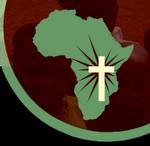I just completed an entry and sent it to the editor. One of my secret pleasure is reading books by ethnic authors, especially by Korean Americans. I have almost every book that are written by Korean Americans, except by Younghill Kang and Richard Kim. Through this project, I learned about their books, I am on a mission to get these books.
Korean American Literature
The first wave of Korean-American writers consisted of two intellectuals who were born in Korea; Younghill Kang and Richard Kim. Younghill Kang was truly a pioneer Korean writer. He wrote two biographical novels in the 1930’s. His first novel, The Grass Roof (1931), took American readers into an unknown, exotic Korea. His second novel, East Goes West (1937), shed light on the lives of Korean intellectuals who were then living in exile from Japanese-occupied Korea. Three decades later, Richard Kim published his first novel The Martyred (1964)—about the Korean War experience. The Martyred was on the nation’s bestseller list for twenty consecutive weeks and was nominated for a Nobel Prize in Literature.
Korean American Literature
The first wave of Korean-American writers consisted of two intellectuals who were born in Korea; Younghill Kang and Richard Kim. Younghill Kang was truly a pioneer Korean writer. He wrote two biographical novels in the 1930’s. His first novel, The Grass Roof (1931), took American readers into an unknown, exotic Korea. His second novel, East Goes West (1937), shed light on the lives of Korean intellectuals who were then living in exile from Japanese-occupied Korea. Three decades later, Richard Kim published his first novel The Martyred (1964)—about the Korean War experience. The Martyred was on the nation’s bestseller list for twenty consecutive weeks and was nominated for a Nobel Prize in Literature.
The second wave of Korean-American writers were the children of immigrants who came to America earlier in the century. They were proud supporters of the Korean independence movement. Mary Paik was born in Hawaii in 1905. She was eyewitness to her parents’ harsh life as laborers in sugar cane fields. She told her mother’s story in Quiet Odyssey: A Pioneer Korean Woman in America (1990). Cathy Song in Picture Bride (1983) captured the disappointment, resilience, and strength of the first wave of Korean immigrant women who came to Hawaii as picture brides. Ronyong Kim in her book Clay Wall (1987) depicted the Korean immigrant’s life in early 20th century California.
After 1990 there was a third and explosive wave of Korean American literature. The children of Koreans who immigrated in the 1970’s grew to adulthood with English as their primary language. They provided a unique voice of growing up in two cultures. Unlike wave one and wave two writers, these younger writers delved into issues of racism, gender, and power. The quantity and quality of these younger writers makes the current landscape of Korean American literature rich and interesting. There are too many quality authors to mention in all, but here is a short list of authors who grace the current literary scene as Korean American authors; Chang Rae Lee --Native Speaker (1995), Susan Choi -- The Foreign Student (1998), Nora Okja Keller--Comfort Woman (1997), Leonard Chang --Fruit ‘n’ Food (1996), and Patti Kim -- A Cab Called Reliable (1997). The premier source of information concerning Korean American Literature is Dr. Elain H. Kim who is professor of Asian American Studies Program at the University of California, Berkeley.
Will there be a fourth wave of Korean-American writers? Perhaps, but perhaps not. After three generations on American soil, people with Korean surnames may be writing no differently than their fellow American authors.
Further Reading
Kim, Elaine H. “Roots and Wings: An Overview of Korean American Literature 1934-2003”, in Korean American Literature, edited by Young-Key Kim-Renaud, Grinker, and Larsen, 2003
Fenkl, Heinz Insu. “The Future of Korean American Literature”, Korean American Literature, edited by Young-Key Kim-Renaud, Grinker, and Larsen, 2003
Kim, Ronyoung, Clay Walls, Sage Harbor, NY: Permanent Press, 1987
Song, Cathy, Picture Bride, New Haven: Yale University Press, 1983
Lee, Mary Paik, Quiet Odyssey: A pioneer Korean Woman in America, Seattle: University of Washington Press, 1990


1 comments:
And I'm thankful for the acknowledgment. Best wishes, Leonard.
Post a Comment